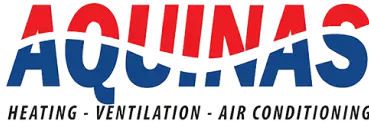Optimizing HVAC for California’s Mixed-Use Developments
The Growing Demand for Mixed-Use Developments in California
Mixed-use developments are redefining urban spaces across California, particularly in areas like Los Angeles, San Diego, Orange County, and the Bay Area. By combining residential, commercial, and recreational spaces, these projects address housing shortages, foster community engagement, and attract investment. However, their success hinges on HVAC systems designed for mixed-use buildings to balance comfort and energy efficiency across diverse spaces.
Why Mixed-Use Properties Thrive in California
Mixed-use developments are increasingly popular in California due to their ability to maximize land use, foster sustainable urban planning, and generate strong financial returns. These factors make them a cornerstone of modern city design, particularly in high-demand areas.
Creating Vibrant Communities
Mixed-use buildings enhance connectivity by integrating spaces for living, working, and leisure within a walkable distance. This design approach aligns with California’s focus on sustainable, community-centered urban development.
Addressing Housing Shortages
With rising populations and limited land availability, mixed-use developments efficiently combine residential units with essential amenities, helping to alleviate California’s housing challenges.
Attracting Investment
These projects often yield high returns through rental income and property appreciation. Efficient HVAC systems can further enhance profitability by reducing energy costs and improving tenant satisfaction.
Unique HVAC Challenges in Mixed-Use Properties
Managing HVAC systems in mixed-use properties is complex due to the varied demands of residential, commercial, and recreational spaces. These challenges require innovative solutions to balance energy efficiency and occupant comfort.
Balancing Diverse Requirements
Residential spaces need climate control focused on comfort, while commercial areas must handle varying occupancies and equipment loads. HVAC systems must accommodate these distinct demands without compromising performance.
Zoning Complexities
Effective zoning ensures each area has the appropriate temperature control. Tailoring HVAC performance to specific zones improves energy efficiency and meets diverse occupant needs.
Meeting Energy Compliance Standards
California’s stringent energy efficiency standards push for advanced HVAC designs that prioritize sustainability while maintaining peak performance.
How HVAC Performance Supports These Vibrant Communities
Efficient HVAC systems are vital for the success of mixed-use developments. They ensure comfort, energy efficiency, and reliability across residential and commercial spaces, creating environments where people and businesses can thrive.
Residential Spaces
Reliable HVAC systems provide consistent comfort, reducing tenant turnover in multi-family units. Advanced technologies also minimize noise and improve indoor air quality, which is essential in densely occupied living areas.
Commercial Spaces
Businesses rely on precise HVAC systems to maintain comfortable environments for customers and employees. Proper climate control supports productivity, enhances customer experiences, and lowers energy costs.
Parallels with Multi-Family and Commercial Property Needs
Mixed-use developments share many HVAC requirements with multi-family and commercial properties. These similarities highlight the importance of efficient, scalable systems that cater to diverse occupant needs.
Multi-Family Properties
HVAC systems in multi-family buildings face challenges like maintaining tenant comfort, controlling energy costs, and managing centralized systems. These needs closely align with those of residential spaces in mixed-use developments.
Commercial Properties
Commercial spaces require HVAC solutions that balance heavy equipment loads, fluctuating occupancy, and energy efficiency. Smart technologies and zoning strategies are essential for maintaining performance in both standalone commercial buildings and mixed-use environments.
Highlighting Local Insights: The Role of Climate and Urban Density
California’s diverse climates and urban density create unique HVAC demands for mixed-use developments. Tailored solutions ensure optimal performance in each region, addressing both environmental and infrastructure challenges.
Bay Area
The Bay Area’s microclimates require adaptable HVAC systems capable of managing varied temperature ranges. Custom zoning strategies are key to maintaining comfort across diverse environments.
Los Angeles & Orange County
High urban density and significant cooling needs, especially during peak summer months, demand powerful HVAC systems. Solutions must handle heavy loads while remaining energy efficient.
San Diego
San Diego’s mild, coastal weather calls for energy-efficient HVAC systems that maintain consistent indoor temperatures without overuse. Proper ventilation is also critical to handle occasional humidity spikes.
The Smart HVAC Advantage
Smart HVAC technologies are revolutionizing the management of mixed-use developments. These advanced systems enhance energy efficiency, reduce operational costs, and improve tenant satisfaction by addressing diverse needs with precision.
Zoning Controls
Smart zoning technologies allow precise temperature regulation across different building areas. This feature ensures energy efficiency while catering to the distinct needs of residential and commercial spaces.
Energy Monitoring
Advanced systems track energy usage patterns in real time, helping property managers optimize consumption and reduce costs. Monitoring also supports compliance with California’s strict energy standards.
Predictive Maintenance
Sensors embedded in smart HVAC systems detect potential issues early, allowing for proactive maintenance. This minimizes downtime and ensures consistent performance across all areas of the property.
Conclusion: Ensuring Mixed-Use Success with Efficient HVAC Systems
Mixed-use developments are at the forefront of California’s urban evolution, blending residential, commercial, and recreational spaces into vibrant communities. The right HVAC systems are crucial for ensuring comfort, compliance, and cost-effectiveness across diverse property types. Property managers and developers should partner with HVAC specialists who understand the unique demands of mixed-use buildings in regions like San Diego, Orange County, Los Angeles, and the Bay Area.

